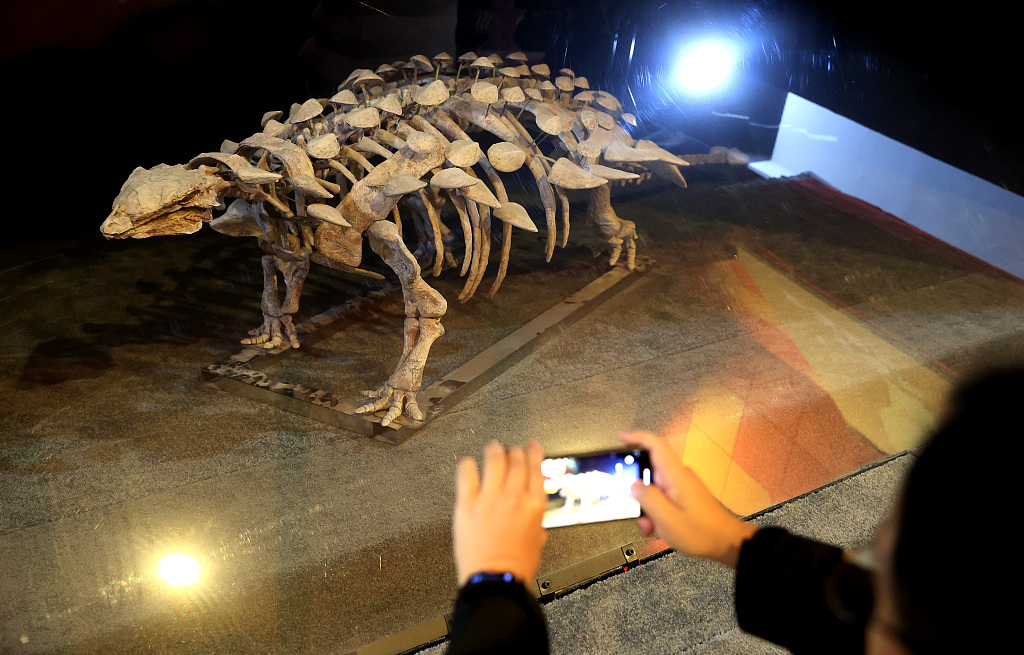A new genus and species of ankylosaurine dinosaur has been identified from two specimens found in southeastern China.

The type specimens of Datai yingliangis reconstructed in situ; the head, cervical, and thoracic regions of the specimens were discovered and extracted from a single block. Image credit: Xing et al., doi: 10.18435/vamp29396.
Named Datai yingliangis, the newly-discovered dinosaur species roamed Earth during the Late Cretaceous epoch, around 96-90 million years ago.
The ancient beast was a member of Ankylosauria, a group of armored dinosaurs with a tail club that reached the pinnacle of diversity in the latest Cretaceous period.
Datai Yingliangis pic.twitter.com/j0IIQgKrP6
— Kecheng Niu (@MrMohaha) March 13, 2024
“Ankylosaurines are the iconic armored dinosaurs that characterize terrestrial vertebrate faunas in the Late Cretaceous of Asia and Laramidia (western North America),” said China University of Geosciences paleontologist Lida Xing and colleagues.
“The earliest members of this clade are known from the early Late Cretaceous times of Asia, but little consensus has emerged as to how they are related to the anatomically derived and chronologically younger forms.”
“In southeastern China, the Cretaceous red sand beds crop out across basins from Zhejiang to Guandong provinces.”
“However, the horizons corresponding to the early Late Cretaceous stages remain poorly sampled.”
Two well-preserved immature skeletons of Datai yingliangis were collected from the Zhoutian Formation in southeastern China.
The specimens were found in association, with the head of one of them resting on top of that of another, and represent slightly different stages of skeletal ontogeny.
“It is the first definitive vertebrate skeleton — let alone that of an armored dinosaur — from the Ganzhou Formation,” the paleontologists said.
According to the authors, Datai yingliangis is unique for having two jugal/quadratojugal horns.

“The main horn develops in the posteroventral corner of the skull, projecting posterolaterally,” they explained.
“The smaller accessory horn sits just anterior to this and obscures the jaw joint from lateral view.”
“Morphologically, it is intermediate between the chronologically older ankylosaurids from Asia (e.g., Crichtonpelta and Jinyunpelta) and derived post-Cenomanian ankylosaurines (e.g., Pinacosaurus),” they added.
“Phylogenetic analyses broadly corroborate this assessment.”

“The new species either falls in the grade of Asian ankylosaurines proximal to the lineages of derived taxa or forms a sister lineage to Pinacosaurus.”
“Based on these insights, the Datai genus makes a significant addition to the early Late Cretaceous vertebrate fauna from southeastern China and highlights the future potential in this region for improved understanding of the origin and early evolution of ankylosaurines.”



